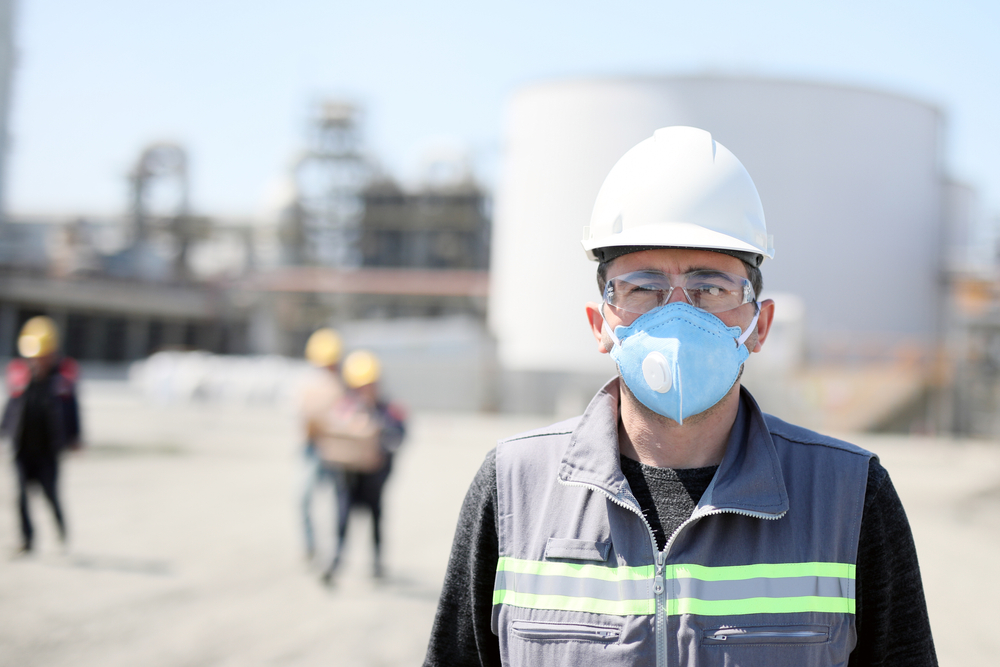In its attempts to protect workers during the COVID-19 pandemic, the Occupational Safety and Health Administration (OSHA) failed to collaborate or coordinate efforts with other federal agencies, the Department of Labor’s Office of the Inspector General (OIG) concluded in a new report.
The OIG pointed out the number of OSHA compliance safety and health officers (CSHOs) has declined over the past decade, while the number of U.S. businesses has increased. Collaboration with other federal agencies’ enforcement or oversight personnel would have better protected U.S. workers given OSHA’s reduced inspection resources.
OSHA did not encourage referrals of potential COVID-19 safety and health hazards from external federal agency personnel active in industries where workers face a high risk of COVID-19 exposure, according to the OIG.
Several agencies have a presence in high-risk industries such as correctional institutions, hospitals, meat processing plants, and nursing homes. Agencies with regular contact in those industries include the U.S. Department of Agriculture’s Food Safety Inspection Service (FSIS), the Department of Health and Human Service’s Food and Drug Administration (FDA) and Centers for Medicare and Medicaid Services (CMS), and the Department of Justice’s Bureau of Prisons (BOP).
During audit interviews, BOP, CMS, and FDA personnel reported seeing workers without personal protective equipment (PPE) and not physically distancing during the pandemic.
Douglas Parker, assistant secretary of labor for occupational safety and health, generally disagreed with the OIG’s findings. Parker pointed out that while OSHA conducted fewer on-site inspections during COVID-19 surges, the agency engaged with employers in response to every valid complaint referral.
“OIG failed to credit OSHA’s engagement with employers ensuring worker health and safety during this dynamic crisis,” Parker wrote in the agency’s response.
However, the OIG found several deficiencies in OSHA’s interagency collaboration:
- OSHA neither tracked nor analyzed referrals from external federal agencies to determine if those agencies were regularly referring potential hazards, and, if not, OSHA did not gauge relevant outreach and training needs.
- The agency did not have up-to-date agreements (memoranda of understanding (MOUs)) with federal counterparts conducting enforcement or oversight activities during the pandemic that would have enabled OSHA to capitalize on collaborative efforts.
- OSHA lost an opportunity to better protect U.S. workers by not identifying federal partners in a position to assist during a large-scale safety and health crisis and not having or creating collaborative agreements with those partners.
The OIG recommended that OSHA develop an outreach plan to be activated during health and safety crises like the COVID-19 pandemic. An outreach plan should identify external agencies with enforcement or oversight personnel active at private sector worksites and define how OSHA will collaborate with those agencies.
Elements of an outreach plan could include a:
- Process to identify and document highly visible safety and health hazards for large-scale safety and health crises;
- Plan for how OSHA will conduct outreach and training on those hazards and how external agency personnel should refer them to OSHA; and
- Tracking system for agency referrals and outcomes of those referrals, using that information to periodically inform OSHA’s outreach plan and types of guidance and training the agencies’ oversight and enforcement personnel need.
The OIG also recommended that OSHA explore mechanisms to enhance collaboration, such as MOUs or other written agreements, using the Government Accountability Office’s seven key features for collaboration (outcomes and accountability, bridging organizational cultures, leadership, clarity of roles and responsibilities, participants, resources, and written guidance and agreements).
OSHA also should incorporate a process in its outreach plan for utilizing interagency agreements for collaboration.

